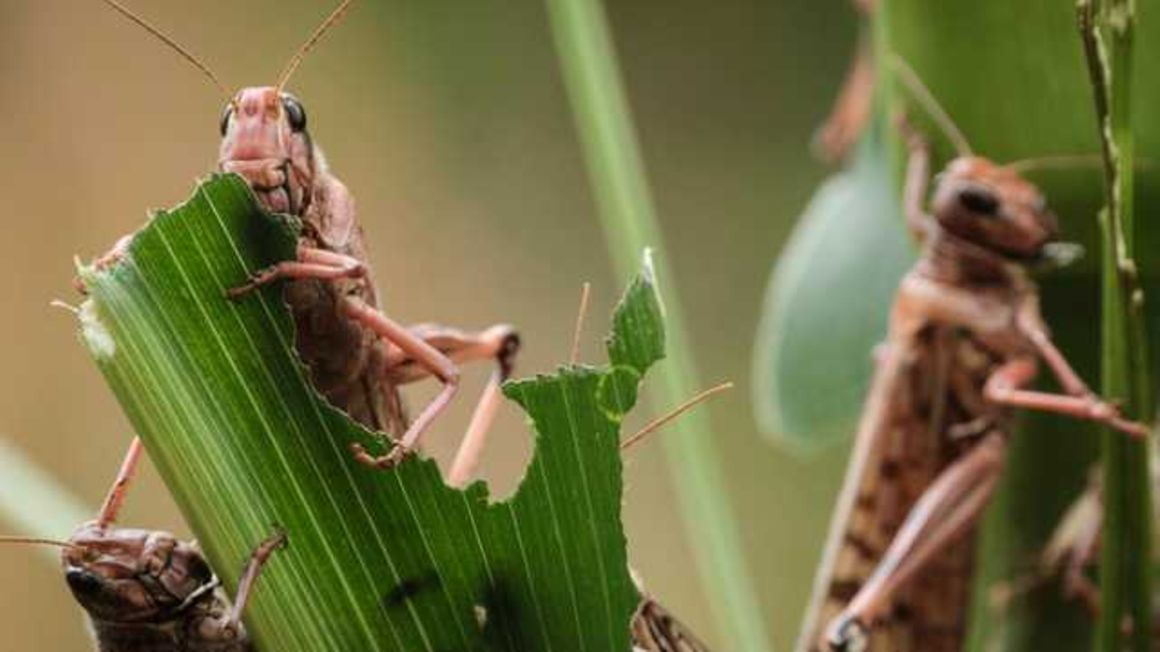Locusts set to return early next year - regional experts

Desert locusts destroy maize in Meru, Kenya. Experts term them a biological time bomb and professional survivalists attuned to changes in climate. PHOTO | AFP
What you need to know:
- Experts want governments to act early to avert losses.
Regional authorities have warned that within four months large swarms of desert locusts could invade the East African region, including Uganda, threatening livelihoods of entire communities.
Experts at the Inter-Governmental Authority on Development (Igad), say the nine member states should prepare for yet another infestation anytime between March and May next year – a period of the year just before the first season harvest.
Locust attacks remain one of the most devastating threats to food security in the Igad states of Djibouti, Eritrea, Ethiopia, Kenya, Somalia, South Sudan, Sudan and Uganda, with the region last hit three years ago. At the time, just a one square kilometre locust swarm showed itself able to consume the equivalent of food for 35,000 people in one day
Mr Kenneth Mwangi, the Transboundary Pest Management Project manager at Igad, yesterday said prevailing weather conditions conducive for locust breeding are being witnessed in the region.
“…these locusts normally migrate from Yemen at a particular time of the year… There are events that are happening like the El-nino and so much increased rainfall in Yemen and Saudi Arabia. That now elevates the risk. We are looking at swarms that will be coming in from those areas in these months because the winds are moving downwards,” he said.
Speaking during the ongoing two weeklong crisis reporting media training on desert locusts and other transboundary pests in Naivasha, Kenya, Mr Mwangi implored regional governments to stay focused on the threat.
In 2020, locusts invaded the East and Horn of Africa region, affecting 3.4 million people, with Ethiopia and Somalia being the worst hit in what was acknowledged as the most dramatic infestation in 25 years.
In Uganda, the desert locusts’ invasion, the first of its kind in several years, was first noticed in Amudat District, bordering Kenya in Karamoja Sub-region. Swarms of locusts attacked and ravaged all greenery, eating away thousands of acres of food crops and pasture.
The pests eventually spread across Karamoja before travelling into Acholi, Lango, Sebei and Teso sub-regions.
In multiple waves, the locusts destroyed vegetation, including crops, leaving at least 750,000 households vulnerable in 10 districts before the government sent out food aid to the affected communities.
However, this time Mr Mwangi says the region is better prepared.
“Last time we had countries trying their own efforts because they never had any collaboration for many years but this time we have a platform of inter-regional transboundary pest management,” he said
Speaking to Daily Monitor yesterday, the director, crop protection in the Ministry of Agriculture, Mr Stephen Byantwale said Uganda has already set up a national task force ahead of the expected invasion.
“We have a regional organisation called the Desert Locusts Control Organisation for Eastern Africa. It’s a nine-member organisation, Uganda is a member. As a country, there is a national task force; we have trained people on forecasting and reporting. 2,000 soldiers were trained. Uganda is prepared,” Mr Byantwale said.
Coming from an area which suffered the brunt of the most recent locust invasion, Upe County MP Lolem Akasile yesterday called for swift government action.
“You know we are farmers and we are cattle keepers and when these locusts come they destroy everything. Now that Igad has anticipated, it is better we plan ahead of the locusts because the other time by the time government came in, locusts had already destroyed everything,” he said
The MP also appealed for early budget allocations to avoid a last minute scramble for funding which could affect efforts to address the expected destruction .



